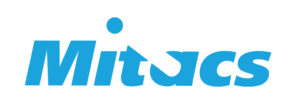Toolkit | Project
Utility Company 2015
Canadian Utility Company: Toolkit Used to Assess Existing EMS
August, 2015
As sustainability becomes a household term, energy companies are facing a new set of challenges. In Canada, customers expect utility suppliers to operate as environmentally, socially and economically sustainable businesses. As a result, the utility sector must consider sustainability principles in decision making, technological innovation and strategic planning. At present, four factors drive sustainable business innovation in the utilities sector: greenhouse gas emissions, climate change and severe weather events, stakeholder engagement and electricity costs.1
Utility companies are concerned with reducing the environmental impacts that result from electricity generation. The Canadian electricity sector is expected to affordably reduce total greenhouse gas emissions through environmental control measures, such as replacing high polluting power sources (i.e. coal plants) with cleaner energy sources (i.e. wind, solar, nuclear). Climate change and severe weather events can adversely impact the reliability of electricity delivery. As such, the electricity sector must do its part to reduce climate change, while also ensuring that future investments to infrastructure prevent and reduce the risks of power outages.
In addition, customers today want to be engaged with their utility provider. Electricity suppliers often develop and implement community programs to educate customers and help them conserve energy through cost control measures, such as on-peak demand management initiatives. Suppliers are also transparent when communicating their long and short term business goals, new technologies and annual performance results. To manage rising electricity costs, utility providers are innovating smart grid technologies which electronically monitor and respond to electricity faults and track usage data.
One Canadian utility company which strives for sustainable development in the areas of environment, society and economy recently used the Sustainability Toolkit (Toolkit) to assess its current Environmental Management System (EMS) and develop a sustainability gap analysis. This was achieved by comparing the Toolkit’s process-based approach for an environmental metric – waste – currently managed by the company’s EMS, to the current management system. The use of the Toolkit approach inspired the company to re-evaluate its sustainability initiatives against other local utility distributors and industry leaders focusing on sustainable practices, designations and certifications.
The Toolkit provided sustainable business guidance for the company’s operations and corporate responsibilities to its community and the environment. The waste metric was chosen as it is one of the company’s key performance indicators. Waste diversion from landfills has a positive impact on the environment, the financial bottom line and demonstrates the company’s commitment to environmental sustainability with implications for future generations. The gap analysis showed 90% completion for Level A for waste and confirmed the robustness of the current EMS while identifying next steps and potential areas for further refinement. Moving forward, the company will complete the action plan and receive Level A standing.
Additionally, the Toolkit’s approach inspired the integration of additional Sustainability Criteria into the EMS for a more holistic approach to sustainability management. As a result, the company is developing a process to monitor, measure and report stakeholder and community engagement. Furthermore, the EMS will encompass tracking the life cycle of materials that are essential to the company’s core business, thereby addressing its products and services, another key criterion that must be addressed as part of a well-rounded sustainability program. By integrating these features into the management system, the company is able to strive for future excellence within the utility sector by developing a comprehensive Sustainability Plan that incorporates continual improvement.
 The research for this case study was funded with the support of a Mitacs Accelerate grant. For more information on the research project, please view our blog and white paper.
The research for this case study was funded with the support of a Mitacs Accelerate grant. For more information on the research project, please view our blog and white paper.
1 Canadian Electricity Association, Electricity Utility Innovation: Towards Vision 2050, 2015.

